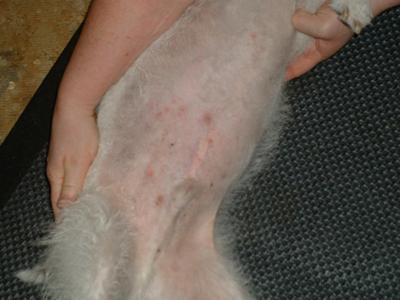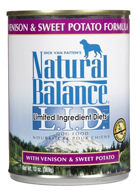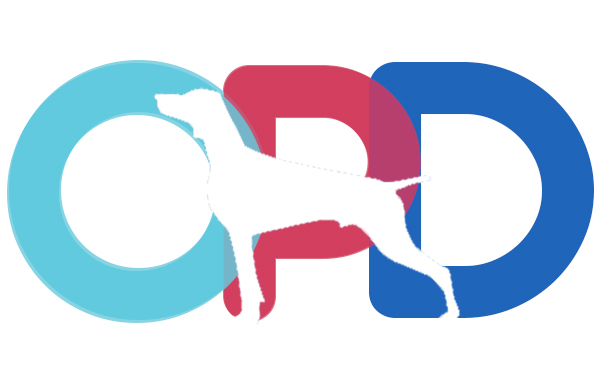Diagnosing and treating a dog with a dog food allergy is one of the most common problems faced by dog owners.
The dog food allergy process is just as tough as it is with humans. First comes the mystery symptom, then come the questions and then the daunting “trial and error” process begins…. Mr. Puppy Dog, would you like some stress with your rash?
The Difference Between a Dog Food Allergy and a Dog Food Intolerance
There is a clear difference between food allergies and a food intolerance:
A dog suffering from dog food intolerance will experience symptoms similar to those that you would experience if you ate excessively spicy or rich foods or bad seafood. Intolerance is caused by the inability to digest fat, additives, artificial colors, rancid or spoiled products, etc. Symptoms like dog diarrhea and dog vomiting can be seen when a dog has specific food intolerance.

One Dog’s Allergic Reaction to Dog Food
A dog with a dog food allergy will experience symptoms that correlate with an allergic reaction, which is caused by a hypersensitive reaction to the disagreeable protein ingredient within the food. Things like dog itchy skin and skin breakouts or dog skin rashes are common examples of an allergic reaction.
So are there any breeds that are more likely to have a food allergy?
Nope. All dogs – female and male, neutered and intact, old or young, Chihuahua or Great Dane – have an equal chance of developing one.
The good news is that both allergy and intolerance symptoms can be avoided by supplying your dog with a diet free from the offending food. Unless, of course, your dog decides to hop up on the counter and finish off the last of your Indian take-out!
What are the Main Problem Foods for a Dog with a Dog Food Allergy?
The foods that tend to cause allergies include…
- Beef
- Chicken
- Chicken eggs
- Corn
- Dairy products
- Soy
- Wheat
But how is that possible? Aren’t these ingredients used in most of the mass-produced dog foods on the shelves in my local pet store?
Right you are, and this is no coincidence.
The incidence of allergic reactions in our dogs is probably associated with the over-exposure to these foods. When you look at the natural diet of our dogs’ ancestors over thousands of years, it is apparent that many of the foods we’ve introduced are relatively new to the species (introduced within the last 50 or 60 years). It takes many generations for an animal to develop a tolerance to certain foods, and dogs simply have not had enough time to adjust.
What are the Common Symptoms and What Can Be Done to Treat Them Quickly
The main symptoms that a dog with a dog food allergy can experience are quite similar to those of other common dog allergies:
- Itchy skin (most common symptom for a dog with a food allergy)
- Chronic or recurrent ear infections
- Hair loss
- Excessive scratching
- Hot spots
- Skin infections (that respond to antibiotics but reoccur after they are discontinued)
- Frequent bowel movements
If any of these symptoms are currently affecting your dog, you will probably have to begin the trial and error process to diagnose your dog’s problem.
First, know that numerous irritants in your dog’s world can cause itchy, irritated skin. If this is the main symptom your dog is experiencing, first make sure that fleas are not the culprit (our Dog Flea Treatment / Dog Flea Medicine page will show you how).
If fleas are not the issue, it’s time to move on to other potential causes such as inhaled allergens, contact allergens, external parasites and certain types of dog skin cancer, just to name a few. See our dog skin allergies for more on the other possibilities… if you rule them all out, you’re most likely dealing with a dog food allergy.
During your trial and error process, do your best to curb the itching with natural and organic tonics. If your dog scratches and bites too much, the skin can break and become infected.
How to Diagnose Your Dog’s Food Allergy: the Elimination Diet
Once you have ruled out any other possible health problems, it is now time to begin the food trial, also called an Elimination Diet.
The purpose of a food trial is to eliminate all food from your dog’s diet, then slowly introduce foods back until the culprit is found. Your dog is probably only allergic to one or two of the many ingredients in their dog food diet, and a protein is usually to blame.
Start your dog on a 12 week “novel protein and carbohydrate” diet which consists of a protein and carbohydrate that the animal has never eaten before. A few examples include:
- Duck and Rutabagas
- Rabbit and Rice
- Venison and Potatoes
Once you have chosen your 12 week diet, feed your dog ONLY that specific diet for the full 12 weeks. As difficult as it may be, your dog is to receive NO treats of any sort during this time. Remember, you have no idea what food source is causing your dog’s dog food allergy.
Observe your dog closely. If your dog’s symptoms show a marked reduction or elimination after the 12 week trial, then attempt to feed your dog its original diet once again. If the symptoms return, then you know that your dog has an allergy to something in that specific food.
If during the dog’s food trial you notice no improvement of her symptoms, then switch to a different protein and carbohydrate source and continue the food trial.
Treatment After the Dog Food Allergen Is Determined
Once you have made a positive allergen diagnosis for your dog, it is time to plan ahead to figure out what your dog’s diet will contain in the future.
As an owner of a dog with a dog food allergy, you have two choices:
- Homemade diet
- Special commercial diet
By feeding a homemade diet, you can periodically challenge your dog with new ingredients. For example, if you are feeding your dog a diet of rabbit and potato, you could add beef one week and see how it is tolerated by your dog. If your dog’s symptoms return, then you know that your dog is allergic to beef and it can be scratched from the meal options.
Hypoallergenic commercial diets work for 80% of dogs with dog food allergies. The important thing to remember when choosing the right hypoallergenic commercial dog food is that it can not contain any of the ingredients that the “old” dog food contained.
Hypoallergenic dog foods usually contain an alternative source of meat, protein and essential fats.
Choosing an organic or natural commercial dog food will ensure a higher quality of ingredients and no by-products! Read the dog food label to make sure all of the ingredients are suitable for your dog.
Best Foods on the Market for Dogs with a Dog Food Allergy
The following dog food passes our Dog Food Ratings Healthy Label Test with flying colors and are specifically formulated for dogs with dog food allergies…
| Recommended Food for Dog with Dog Food Allergy | |
|---|---|
 Natural Balance Limited Ingredient Diets | |
Taylor Tips!My parents fed me one kind of natural dog food since I was a puppy and I had no problems for almost 6 months. Then all of a sudden I started having diarrhea and needing to go to poop 5 or 6 times a day! They switched my food to Natural Balance Allergy Formula and I was back to normal in less than a week. Whew! |
Do you believe in holistic pet care? If so, please tell your friends about us. Thank you for supporting our efforts!
